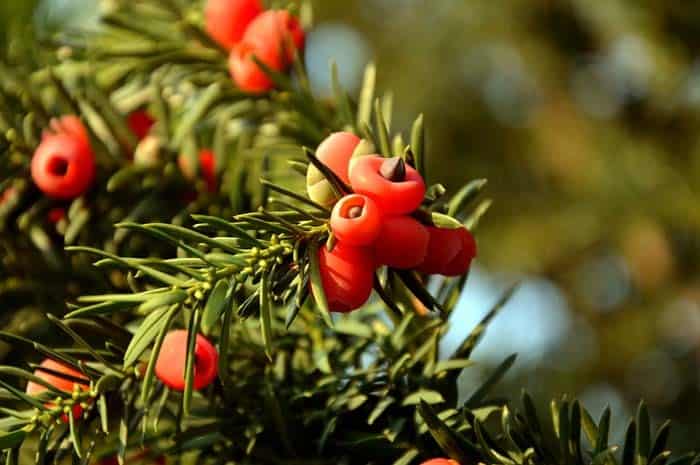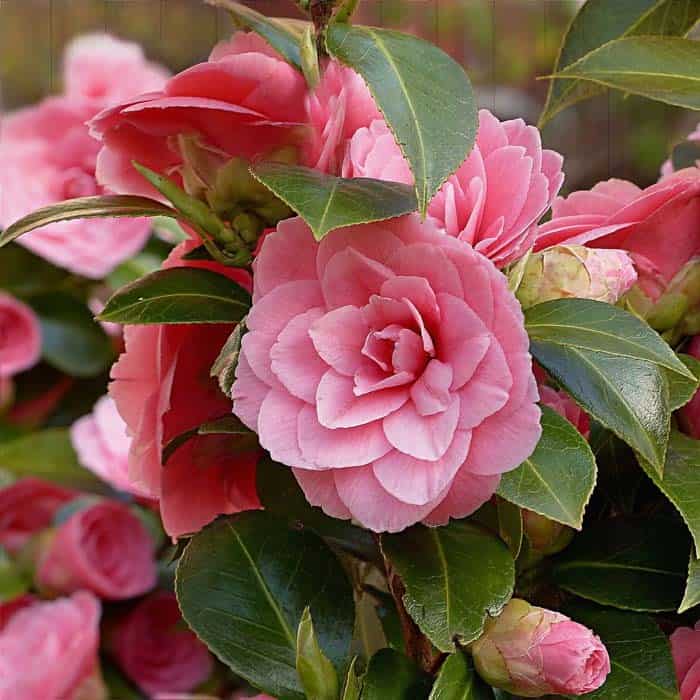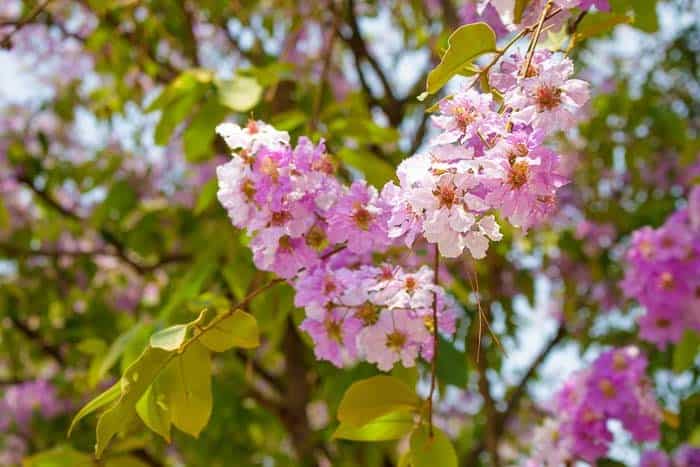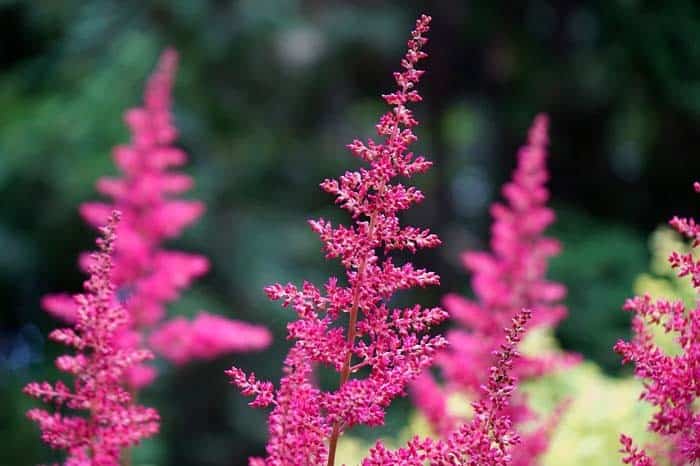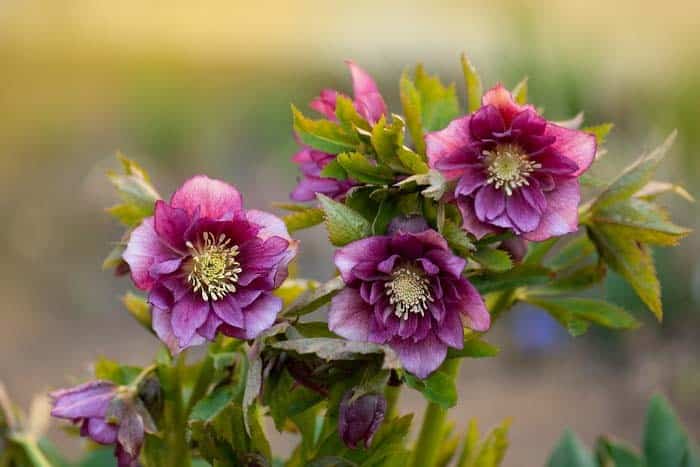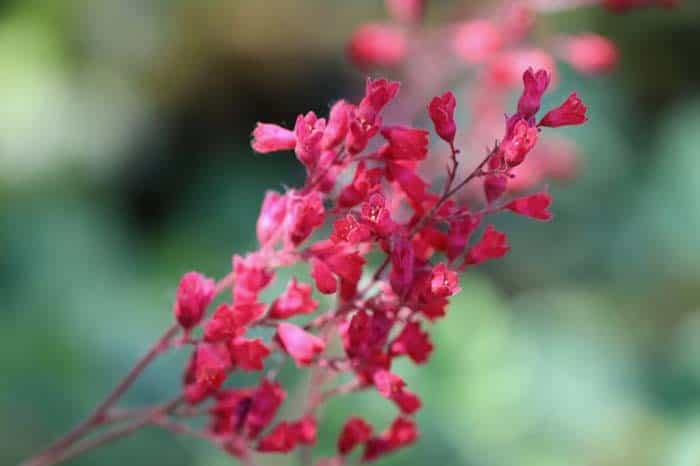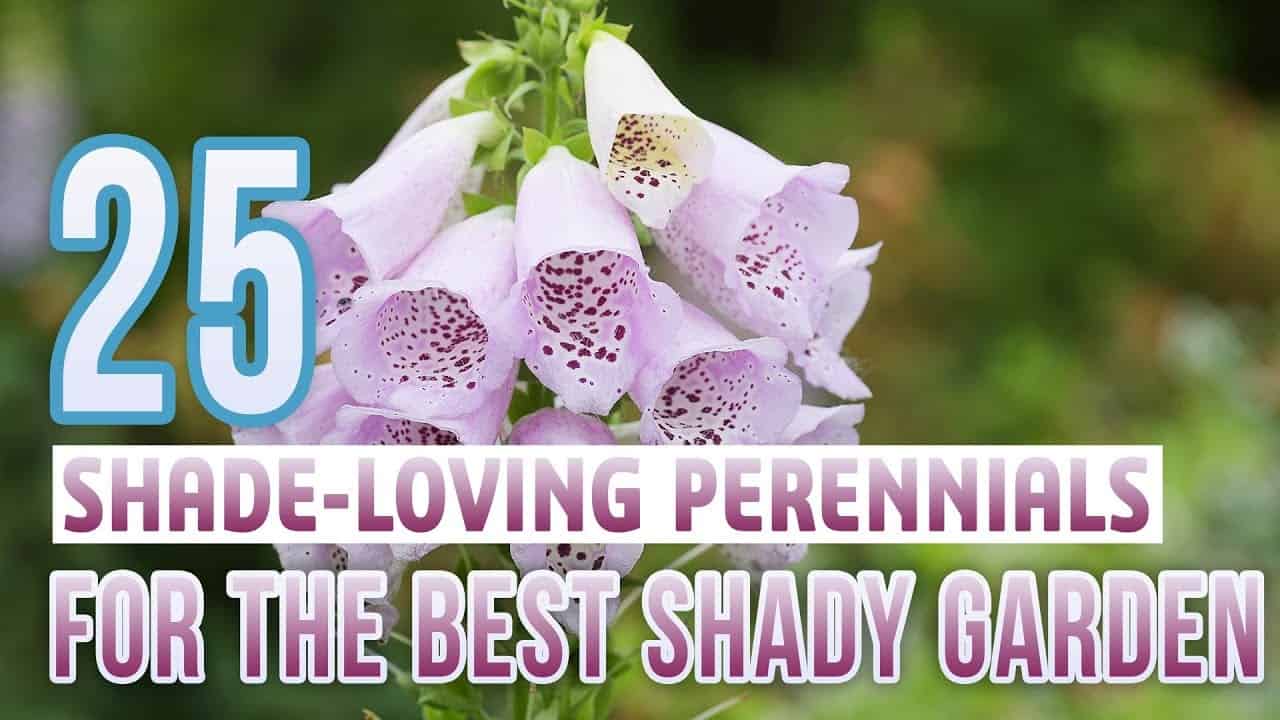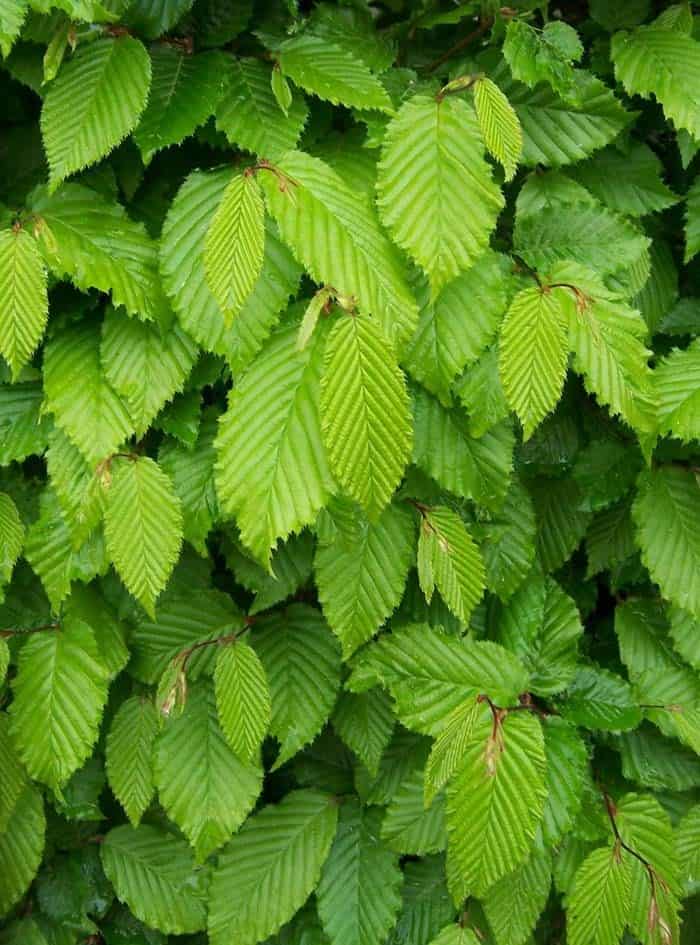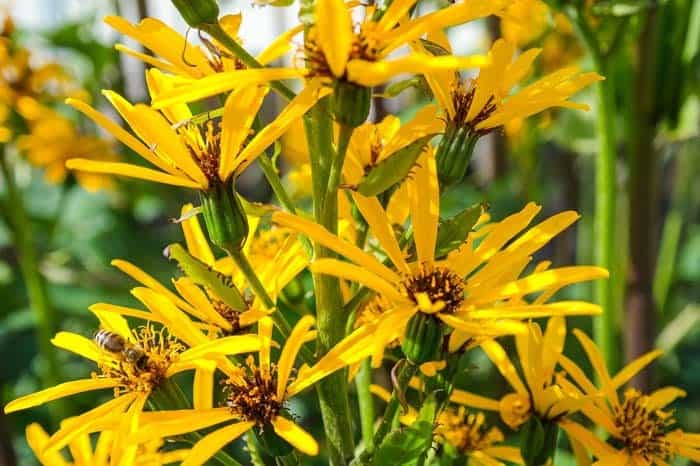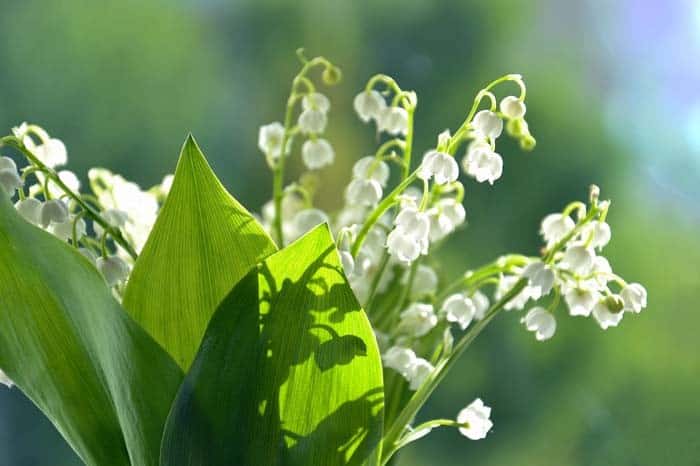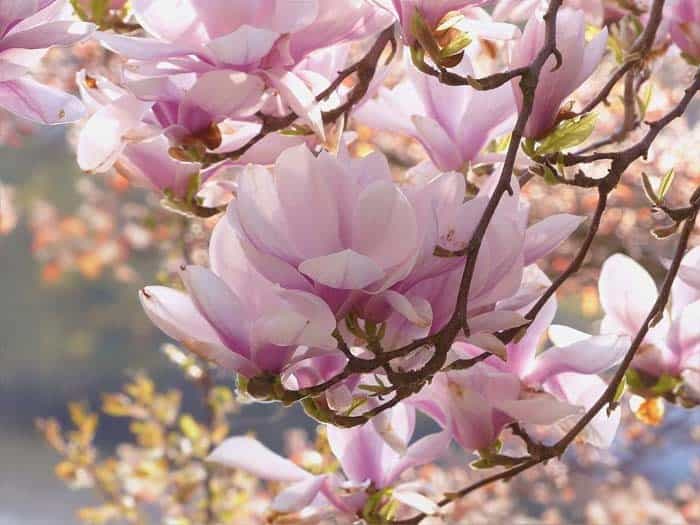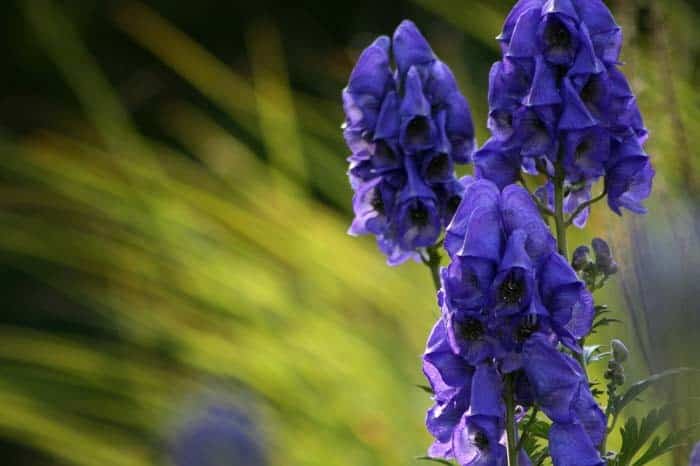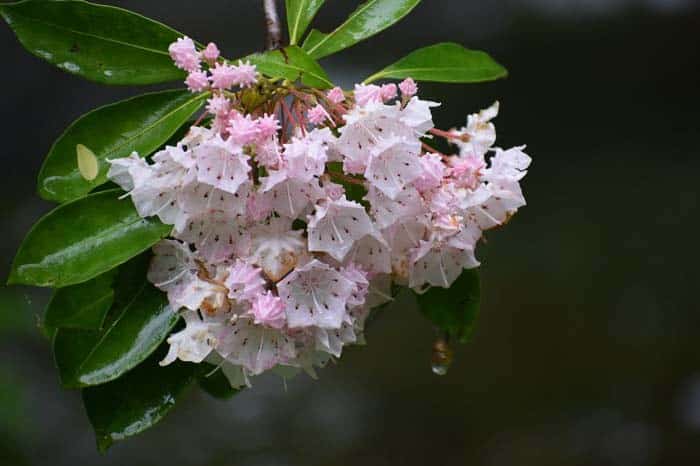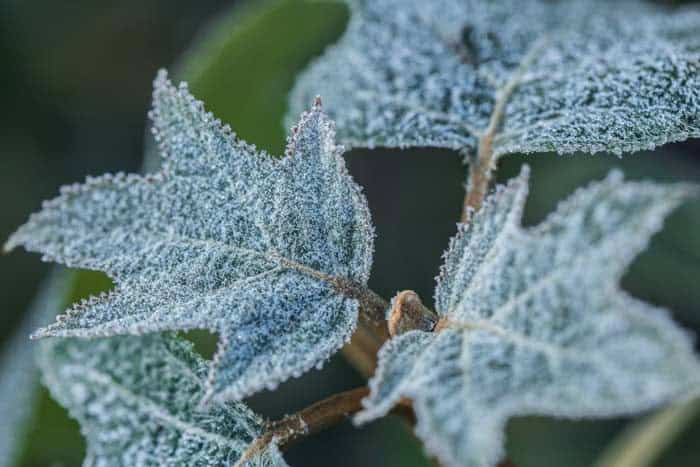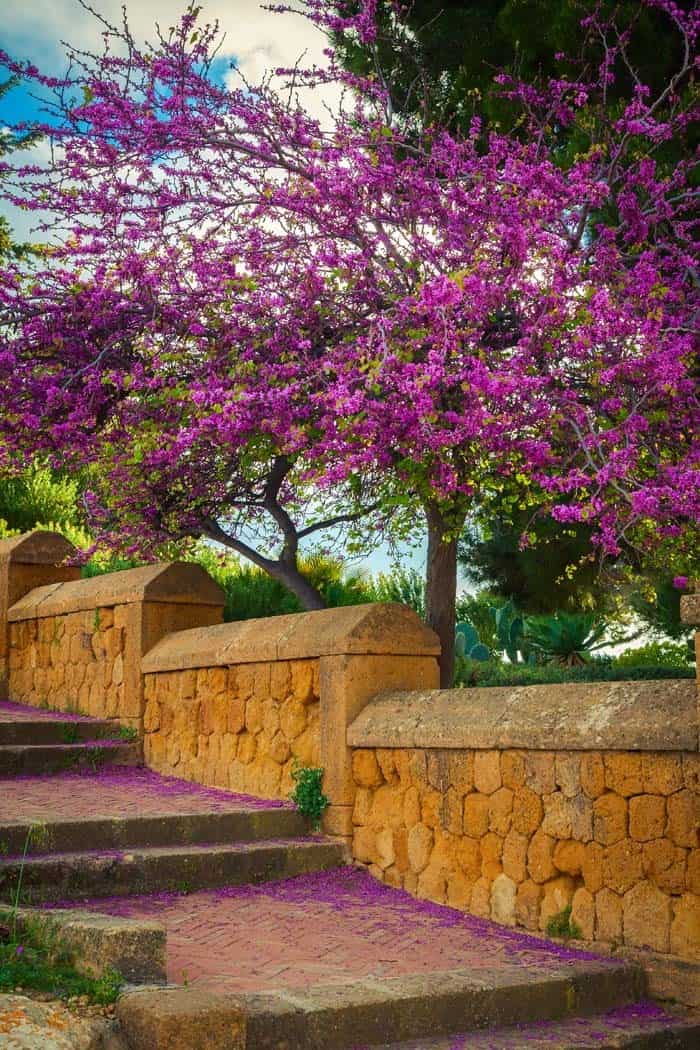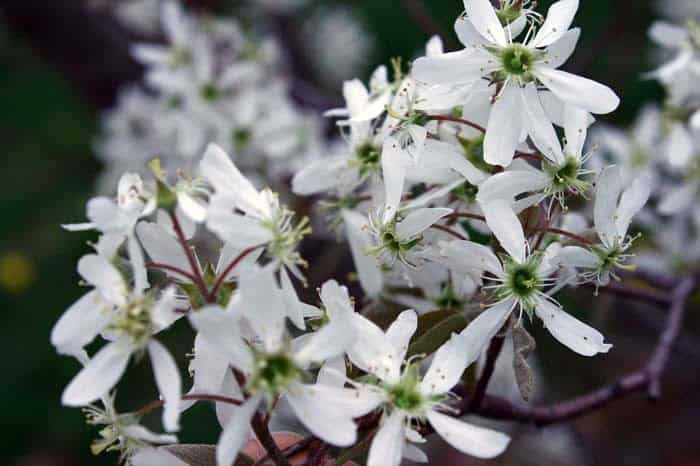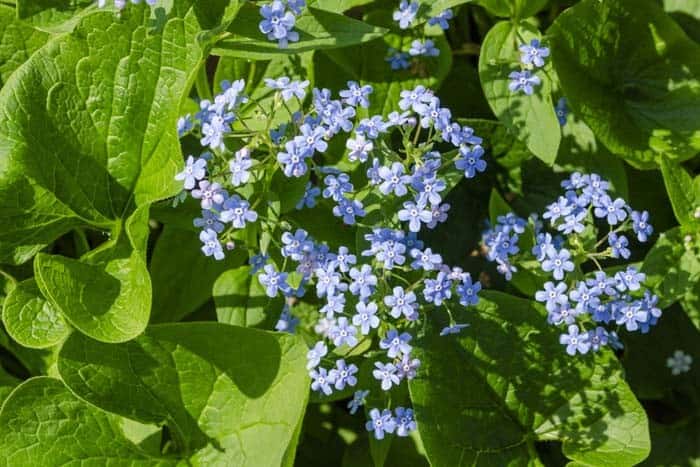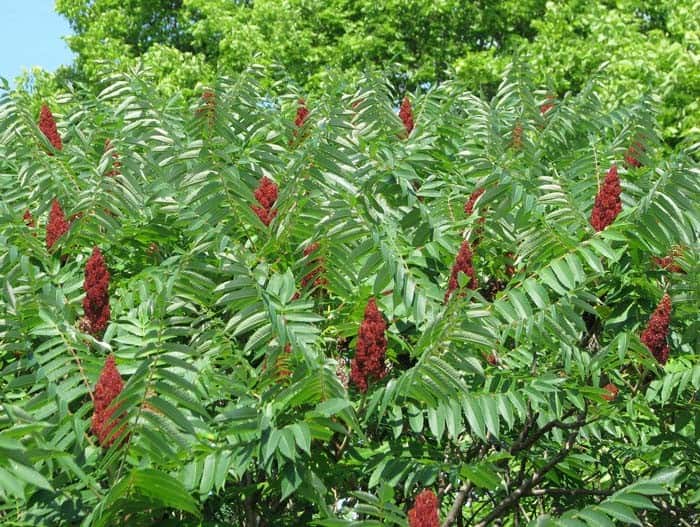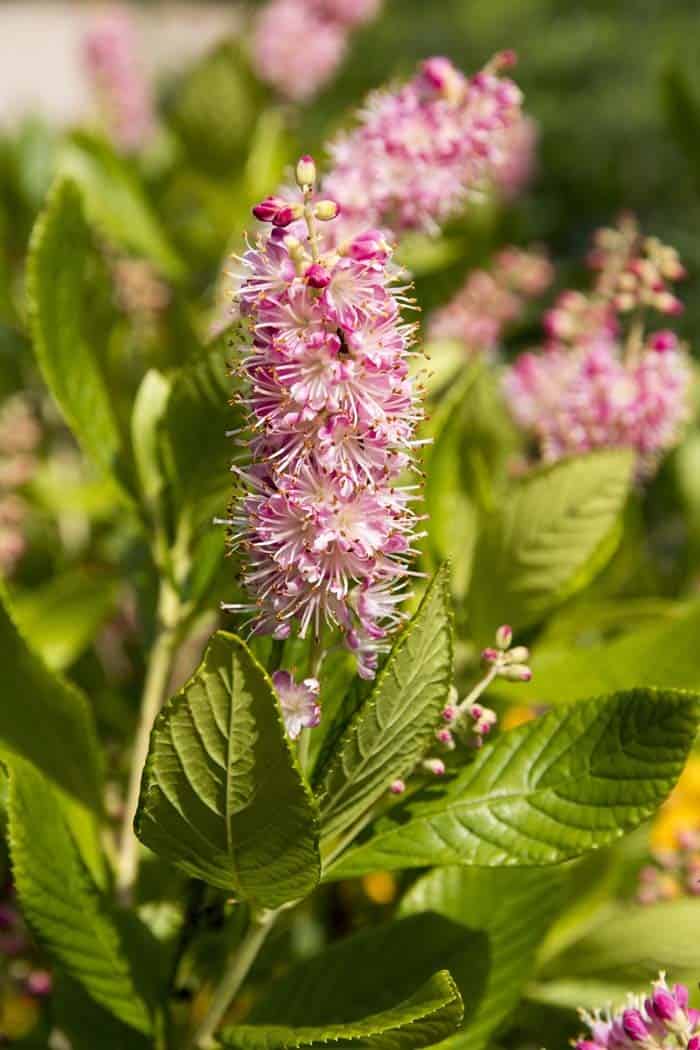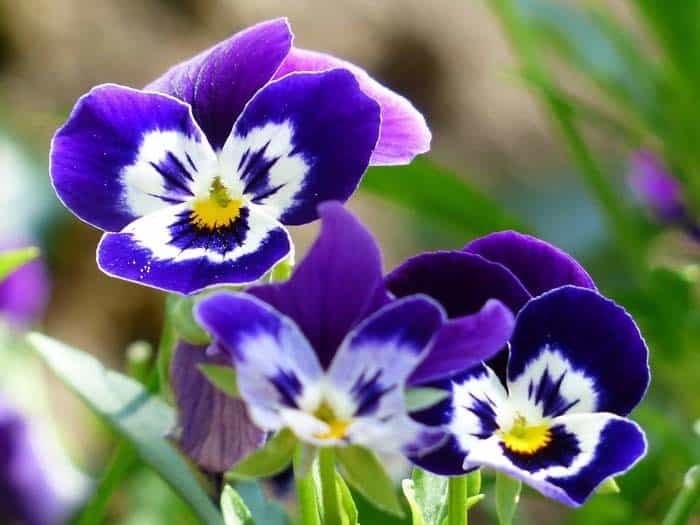Perennials are a gardener’s delight, boasting hardiness and low maintenance needs. No need to replant every year! While many varieties rely on direct sunlight for their life cycle, there are plenty that thrive in shade. This means you can plant them beneath trees or along the edge of your side yard, enjoying their beauty without worrying about harsh sun exposure.
Camelia
For those seeking vibrant flowering perennials that thrive in shaded areas, Camelia is an excellent option. Its stunningly large and boldly colored blooms inject life into a shaded backyard. This versatile shrub can flourish in both full shade and partial sunlight, offering flexibility when selecting the perfect spot for it in your garden.
Crape Myrtle
The vibrant blooms of the unusual crape myrtle are certainly eye-catching. But what’s truly noteworthy is the sheer diversity of varieties within this flowering tree species. To ensure you’re getting a cultivar that thrives in your specific environment, be sure to scrutinize the label for shade tolerance. When it comes to larger flowers, placing the tree in an area receiving at least a few hours of direct sunlight each day can make all the difference.
False Goat’s Beard
For the adventurous gardener seeking to add some uniqueness to their shaded areas, the false goat’s beard is an excellent choice. Its striking cone-shaped clusters of flowers boast delicate, feathery petals that create a visually stunning display from a distance. This plant is particularly appealing to pollinators such as honeybees and other beneficial insects, which will undoubtedly bring your garden to life with their busy activity.
Notably, the false goat’s beard is also incredibly resilient, thriving in zones 5B-8, making it an ideal option for those looking to add some excitement to their shade-loving landscape.
Hellebores (Lenten Rose)
Hellebores may seem intimidating with their name alone, but beneath their modest appearance lies a resilient flowering plant that thrives in shaded conditions. The dainty petals of these blooms boast an enchanting translucent quality, evoking the soft hues of watercolor paintings. While their beauty is undeniable, hellebores are also surprisingly hardy and drought-tolerant, making them an excellent choice for gardeners with varying levels of commitment.
To reap the most rewarding results, plant hellebores in partial shade within USDA zones 4-9.
Heuchera (Coral Bells)
If you’re struggling to keep deer out of your garden, consider planting heuchera – a stunning perennial that’s naturally deer-repellent. Its striking green or purple leaves bring a pop of color to shaded areas, making it an excellent choice for adding visual interest to your backyard. If you’re looking for more inspiration, check out our video on the 20 Best Shade-Loving Perennials.
When heuchera blooms, it produces tall stalks adorned with vibrant flowers that will attract beautiful butterflies. Plus, its hardiness in zones 4-9 makes it an easy and rewarding addition to your garden.
Hornbeam (Ironwood or Musclewood)
When seeking foliage for a low-sun area, consider the hornbeam, an outstanding option. Its distinctive veined leaves provide year-round visual interest. As June approaches, the tree’s catkins burst forth, introducing a delightful textural element to its compact silhouette. The dense foliage of the Hornbeam is particularly attractive to songbirds and other creatures in search of shelter, making it an excellent choice for those looking to create a welcoming environment.
Japanese Maple
The Japanese maple tree is a breathtaking sight in botanical gardens during the fall season. Its leaves undergo a stunning transformation as summer gives way to autumn, turning a vibrant shade of red that starkly contrasts with its dark bark. This striking display can be replicated in zones 5-9 by planting the tree under a canopy of mature trees with full foliage, where it will flourish in dappled sunlight.
Leopard Plant (Ligularia)
Transform an often-overlooked area of your backyard into a vibrant oasis with the leopard plant, which flourishes in USDA zones 4-9. Its large, dark-green leaves provide a stunning backdrop throughout the year, making it a versatile addition to any outdoor space. As the seasons change and the plant begins to bloom, you’ll be treated to an impressive display of bright yellow flowers that seemingly float above the foliage, adding a pop of color to your garden.
Lily of the Valley Shrub (also known as Japanese Pieris or Andromeda)
For expansive, partially-shaded spaces, the lily of the valley presents an effortless choice for horticultural enthusiasts. This flowering shrub exhibits a strong affinity for shaded environments, its dark-green leaves boasting lighter-colored edges as they unfurl. As spring arrives, the plant bursts into bloom, showcasing intricate clusters of delicate flowers that are sure to captivate.
Magnolia
For those who have never ventured southward, the magnolia is an extraordinary treat in store. This shade-loving perennial thrives in zones 4-9, boasting stunning features that make it a must-have for any landscape. At maturity, these magnificent trees can reach impressive heights of 15-25 feet, their glossy green leaves rustling softly in the breeze.
But the true pièce de résistance is the flowering spectacle that unfurls with each new bloom.
Rich pink and purple hues burst forth, filling the air with a mouthwatering, sweet fragrance that will leave your senses intoxicated.
Monkshood (Wolfsbane, Aconitum)
Wolfsbane, also known as Monkshood, derives its name from the toxic compounds it harbors. These hazardous chemicals make it crucial to exercise caution when handling these plants, especially if you have children or pets at home. To fully appreciate the striking purple blooms in zones 3-7 without worrying about unwanted consequences, it’s advisable to cultivate Monkshood in a pet-free and family-friendly environment.
Mountain Laurel
With an otherworldly charm, the mountain laurel is arguably the most enchanting shade-loving plant in existence. Its slender, elongated leaves boast a rich, deep green hue that brings a sense of depth to even the most shaded areas of your yard. But it’s when the flowers begin to unfurl that the real magic happens. Starting as spiky pods, they gradually open into intricate geometric blooms featuring pointed tips, a true marvel of nature.
Oakleaf Hydrangea
While many are familiar with hydrangeas, the oakleaf hydrangea is a lesser-known but equally impressive variety. Its unique feature is the large, cone-shaped flowers that rise above the foliage, creating a striking display of bold and dramatic proportions.
If you’re looking to bring some life to your shaded areas, this plant thrives in zones 5B-9 and does particularly well when provided with partial to full shade.
This versatility makes it an excellent choice for adding interest and texture to your outdoor spaces.
Redbud
If you’re searching for perennial trees that can thrive in shaded environments, the redbud is a stunning option to consider. Its slender branches stretch out elegantly, and come springtime, they’re adorned with vibrant purple blooms, creating a truly enchanting sight – especially if you reside in USDA zones 4-8. One of this tree’s greatest assets is its low-maintenance nature, requiring minimal pruning efforts.
Serviceberry
The serviceberry tree, also known as the sugarplum tree, is a fruit-bearing wonder that thrives in various climates. Its vibrant berries display a stunning range of colors, transitioning from green to deep purple throughout the season. But even before the berries ripen, the tree creates a whimsical scene with its delicate white blooms, transforming your yard into an enchanting fairytale setting. Notably, these trees exhibit exceptional hardiness, allowing them to flourish in zones 2 through 9.
They are particularly well-suited for colder regions, making them a fantastic option for those living in such areas.
Siberian Bugloss
The Siberian bugloss is an attractive solution for covering ground with limited sunshine. One of its most striking features is the large, light-green leaves with dark veins that grow from the soil. As the seasons transition into spring, tiny purple flowers emerge, injecting a delightful burst of color into the area. The plant’s ability to thrive in cool weather is likely no surprise given its name, and it proves to be quite resilient, flourishing in zones 3-8 with ease.
Sumac
With its vibrant and cheerful appearance, the stunning sumac tree is a perfect addition to any shady backyard. When it comes to choosing the right variety for your outdoor space, climate plays a significant role – typically, sumacs thrive in zones 3-9, making them an ideal choice for many gardeners.
One of the most notable features of this lovely tree is its impressive display of dense, upright clusters of bright red berries that emerge during late summer to early fall, adding a pop of color and vibrancy to your landscape.
Summersweet (Clethra)
Indulge in a whimsical haven teeming with butterflies and hummingbirds by incorporating summersweet plants into your landscaping. These low-maintenance beauties produce lush foliage and striking, cone-shaped structures adorned with feathery white blooms as they establish themselves.
One of the most attractive aspects of summersweet plants is their ability to deter deer, making them an ideal solution for gardeners seeking to safeguard their outdoor spaces from these unwanted visitors.
With proper care, you can expect optimal growth and extended blooming periods in USDA zones 3-9.
Violas
Transforming a dull area of your yard with a pop of color is easier than you think, thanks to the vibrant viola plant. Its lush display of rich purple blooms can turn a shaded spot into a stunning focal point. To create a breathtaking visual effect, consider planting violas along the perimeter of your home or beneath a tree’s canopy. This spectacular flower thrives in zones 6-11, making it an ideal choice for adding drama to areas that might otherwise be lacking in color.
Yew
At first sight, the Yew’s dark green foliage and vibrant red berries evoke a festive atmosphere reminiscent of Christmas. However, its adaptability to various growing conditions makes it a versatile addition to any yard. Thriving in zones 4-7, this shrub excels with or without direct sunlight. Additionally, regular pruning ensures perennial growth, making it an ideal choice for many gardeners.
